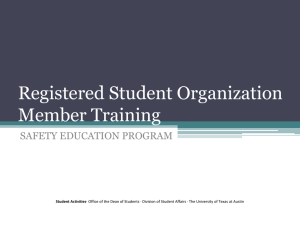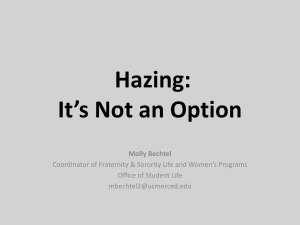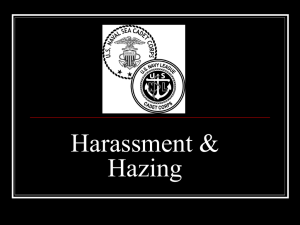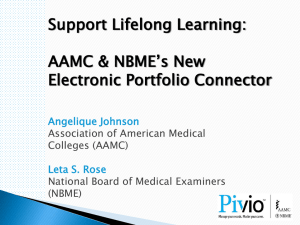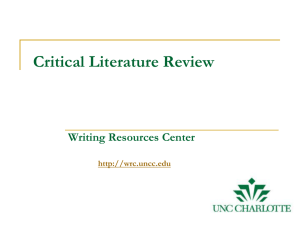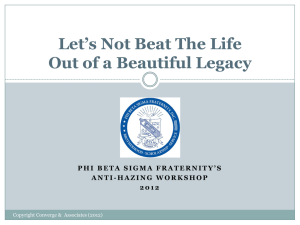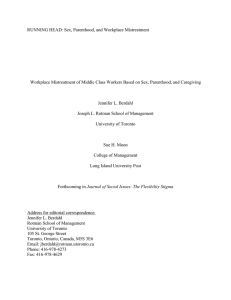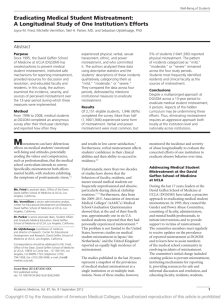The Surgical Educational Environment
advertisement
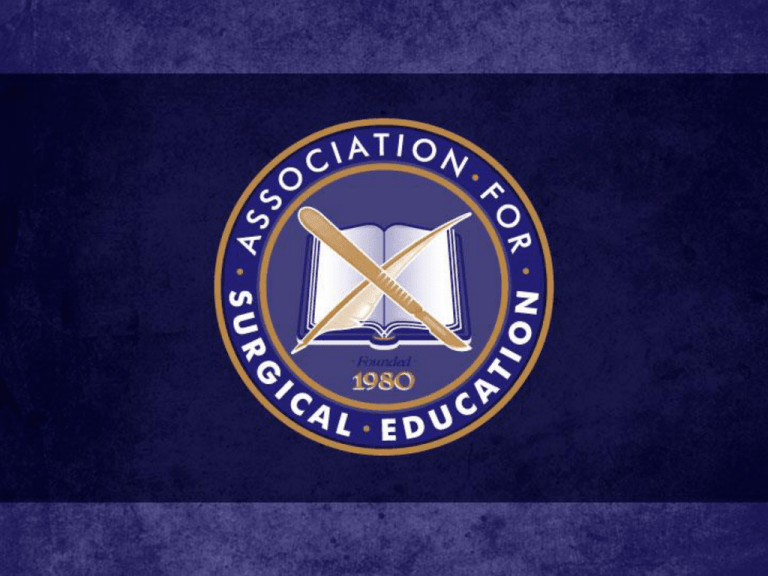
The Surgical Educational Environment Part 1: Socrates & Halsted Toby C Tally MD GRU/UGA Medical Partnership, Athens, GA Clerkship Directors Workshop April, 2014 Goals & Objectives • Attempt to define types of mistreatment. • Examine teaching methods traditionally used in surgical training. • Discuss issues at the intersection of teaching methods and mistreatment. Socialization Tacit SECI model (Nonaka & Takeuchi 1996) Years 1 & 2: Teaching professionalism • • • • • Small Group Learning, 6 hours/week Explicit expectations Controlled, safe environment Faculty role models (many non-MDs) Formative and summative assessments The Clinical Years • • • • • New environment, new game Don’t know the rules Rules keep changing Told what NOT to do. Experiences differ from their classmates’ • No longer all about them AAMC GQ Definition of Mistreatment • Mistreatment, either intentional or unintentional, occurs when behavior shows disrespect for the dignity of others and unreasonably interferes with the learning process. Examples of mistreatment include sexual harassment; discrimination or harassment based on race, religion, ethnicity, gender, or sexual orientation; humiliation, psychological or physical punishment and the use of grading and other forms of assessment in a punitive manner. The ‘Never’ Column AAMC GQ • >95% checked NEVER for most – the bad ones. • Handful in range of 85-93% • 76.7% NEVER Publicly humiliated • 52.8% NEVER Publicly embarrassed The ‘Never’ Column AAMC GQ 2013 Summary BAD • 76.7% NEVER Publicly humiliated • 52.8% NEVER Publicly embarrassed Not so bad Legitimacy Assessment Model of Rationalization Socialization. • we teach this way because it works – to train surgeons who can think on their feet, – make critical decisions quickly with incomplete information. • we teach med students this way – to show them what surgery is about and – see if they want to do it, and if they can. • “There is research to suggest that some stress and anxiety can be beneficial in learning. There appears to be a certain level of tension and disequilibrium needed to stretch and challenge students to learn.” [VM] Pimping is… • • • • A useful training tool? A formative assessment tool? An initiation ritual? Socratic teaching method + peer pressure? Pimping Benign Pimping • Teaches Malignant Pimping • any question that was “clearly inappropriate for • “Encourages you to become students’ level of eloquent in being able to training,” that was meant verbalize what you have read in to “trip students up” or a manner you can share with “humiliate” them, or that your colleagues” was asked “to make • Identifies gaps in knowledge students feel stupid” • Tests how you handle pressure Military Training • Hazing in basic training was believed to provide – socialization – cohesion-building – weeding out those unfit or unwilling to serve • NO HAZING, but “physical and mental hardships associated with operations or operational training do not constitute hazing” • “Eradications of hazing has not diminished the socialization, camaraderie or commitment of new recruits.” Raising children • Why do we torture 9-year olds with thousands of multiplication problems? • Why do we let our children beat up on each other? • So they can succeed in the real world so it is with medical students • • • • • This is the real world: Tell them what to expect Challenge them Make them practice Encourage, don’t coddle Jessica Hagy, thisisindexed.com • And they will learn how to handle themselves with “good” pimping and tough love. References 1) Virtual Mentor: The Problem of Mistreatment in Medical Education. AMA Journal of Ethics, March 2014, Volume 16, Number 3: 153-234 2) Experiences of belittlement and harassment and their correlates among medical students in the United States: longitudinal survey. Frank E, Carrera JS, Stratton T, Bickel J, Nora LM, BMJ. 2006 Sep 30;333(7570):682. Epub 2006 Sep 6. PubMed PMID: 16956894; PubMed Central PMCID: PMC1584373. 3) ‘You learn better under the gun’: intimidation and harassment in surgical education. Laura J Musselman, Helen M MacRae, Richard K Reznick1 & Lorelei A Lingard. Blackwell Publishing Ltd 2005. MEDICAL EDUCATION 2005; 39: 926–934. 4) Wanted: role models - medical students’ perceptions of professionalism. Anna Byszewski, Walter Hendelman, Caroline McGuinty, Geneviève Moineau, BMC Med Educ. 2012; 12: 115. Published online 2012 November 15. doi: 10.1186/1472-6920-12-115 5) The relationship between verbal abuse of medical students and their confidence in their clinical abilities. M K Schuchert, Acad Med - August 1998 (Vol. 73, Issue 8, Pages 907-9 6) Perceived stress during undergraduate medical training: a qualitative study. Christina Radcliffe & Helen Lester, Medical Education 2003;37:32–38 7) Delese Wear , Margarita Kokinova , Cynthia Keck-McNulty & Julie Aultman (2005): RESEARCH BASIC TO MEDICAL EDUCATION: Pimping: Perspectives of 4th Year Medical Students, Teaching and Learning in Medicine: An International Journal, 17:2, 184-191
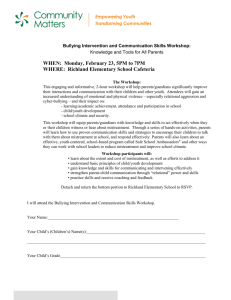
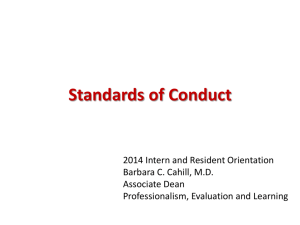
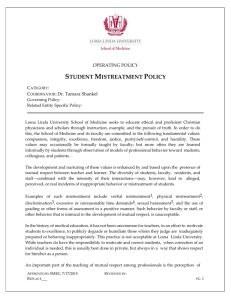
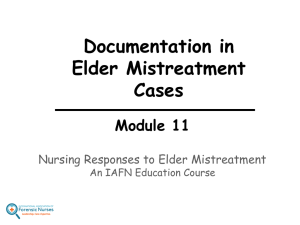
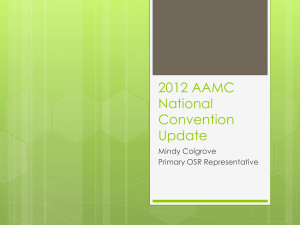
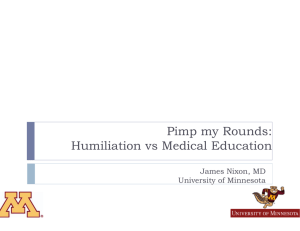
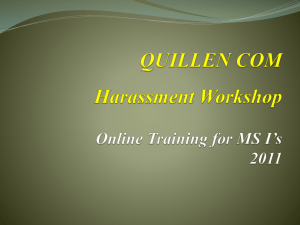
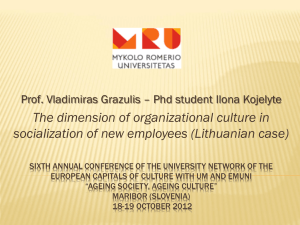
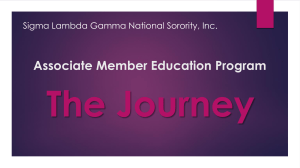
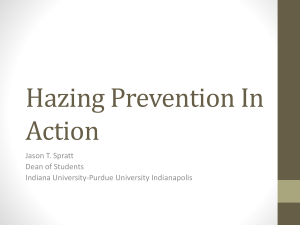
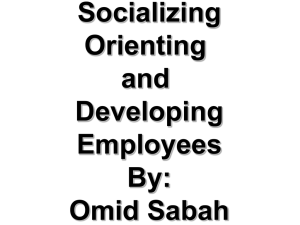
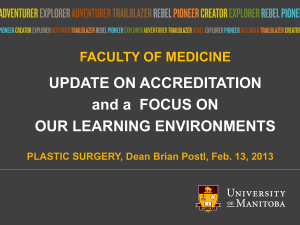
![Faculty Forward [PDF]](http://s2.studylib.net/store/data/005260716_1-e64c3a84465fecffce46203374b03bc3-300x300.png)
